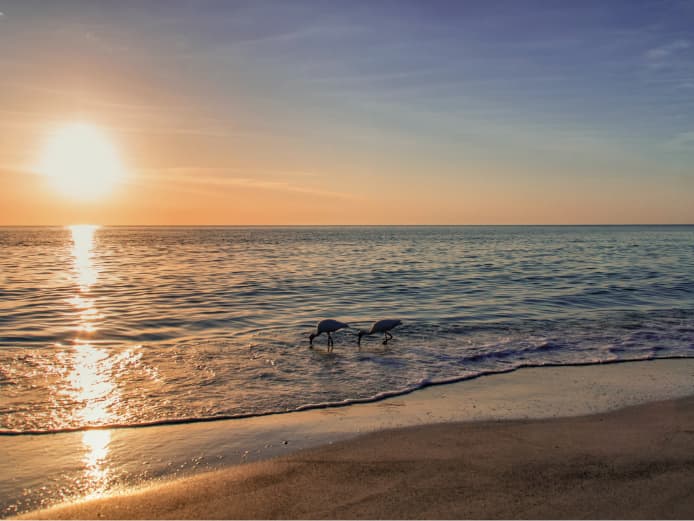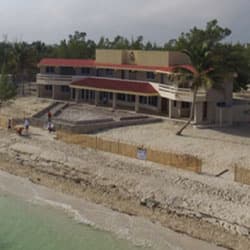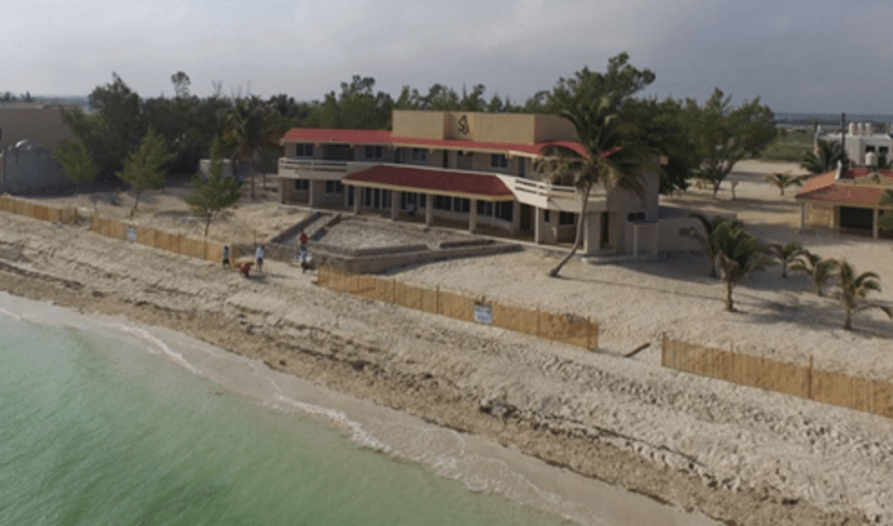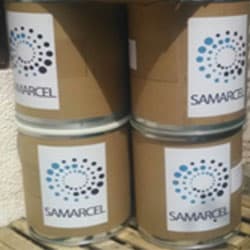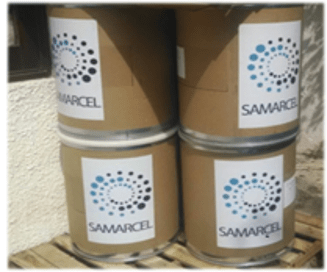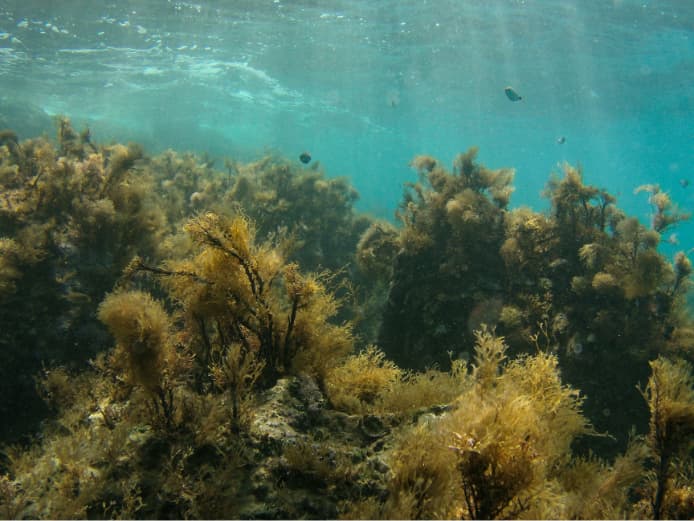Beach stabilization and Dune Restoration (2016-2018), Yucatan, Mexico
The sandy beaches of Progreso (Yucatan, Mexico) have been experiencing severe erosion and shoreline retreat for decades. As a result, local governments developed various beach nourishment projects for erosion control. The last nourishment occurred in March 2015 with limited success following severe storm-related erosion events. Consequently, a government agency (Secretariat of Urban Development and the Environment, SEDUMA) promoted a number of pilot projects to evaluate sustainable alternatives for beach erosion control and shoreline stabilization. Beginning in June 2016, SandFirst was tested in Progreso, Mexico by MarCost SA de CV in the upper Yucatan peninsula of Mexico on a previously renourished beach section of Progreso, Yucatan, with monitoring for one year until June 2017. SandFirst was applied to stabilize the beach through sand cohesion enhancement, and the restoration of a dune. The dune restoration aspect of the project consisted of placing 100 m3 of reclaimed windblown sand to form a dune which was planted with two native plant species. Dune stabilization was reinforced by applying a solution of SandFirst and constructing a small wooden sand fence. The SandFirst applications on the beach were conducted using low concentration solutions applied weekly or biweekly using two methods: 1) Application in ditches: ditches approximately 40 cm wide and 50 cm deep were excavated at low tide along the beach on a strip that was two meters wide from the high tide line seaward; 2) Irrigation: a SandFirst solution was applied throughout the length of the dry beach using a specially designed sprayer system. Beach profiles were measured for 12 months in the SandFirst-treated beach section and compared with control beach profiles east and west of the treated beach. Success metrics included the evolution of the shoreline and sediment volume variations in the berm and foreshore. Other metrics included changes in dune vegetation cover and variations in dune toe elevation.
Project Results
Application of SandFirst to the dune successfully stabilized the dune until the establishment of vegetation. After five months, vegetation cover was established on approximately 70% of the dune area and the sand fences increased the elevation of the dune toe by 12 cm. Beach width increased in the section, while the control sections displayed continued erosion. Sand accretion rate in the treated section was +0.06 m3/m, whereas in the non-treated section the erosion rate was -4.04 m3/m, which is consistent with reported erosion data in neighboring coastal areas. The results provide evidence that the SandFirst treatment is a suitable method for increasing beach resilience and may be used to complement beach nourishment projects. The sand dune restoration was successful as dune vegetation was enhanced by the treatment. The project increased energy efficiency by making nourishment projects more effective through enhanced sand retention and dune restoration. The project also created a carbon sink through the restoration of the beach dune by reclaiming windblown sand and planting native species. Restoration of the dune created new habitat (275 m2) that provided protection to some invertebrate species. The treatment and sand dune and fence design/location did not impede the nesting of sea turtles as three successful nestings and hatchings were observed on the beach during the project.
Detailed information on the project can be obtained in the 2018 WEDA Summit & Expo proceedings in the following citation:
Ocaña, F., Dahmani, A., Pinzón R., Ceballos, D., et al. “Protein Polysaccharide Biopolymers (PPBs) Technology Evaluation for Renourished Beach Erosion Control,” Proceedings of the Western Dredging Association Dredging Summit & Expo ’18, Norfolk, VA, USA June 25-28, 2018





